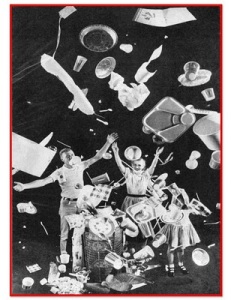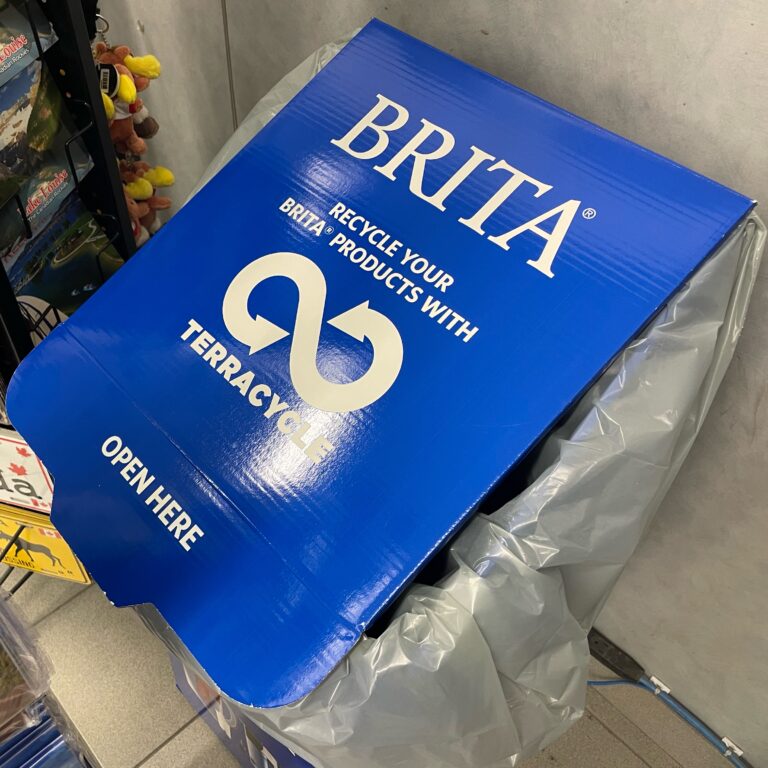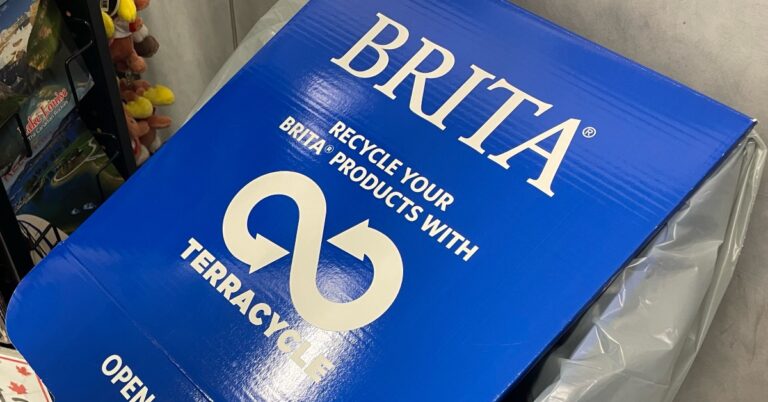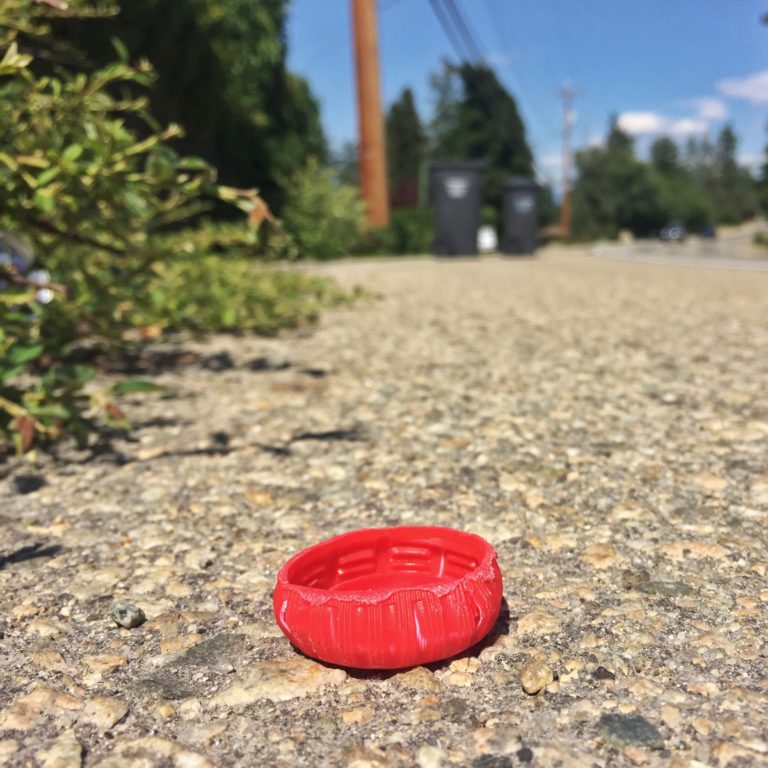Writin’ about Recyclin’
I accomplished something tonight! It’s not quite finished and the table that I mention at the end is still in production, but basically I’ve written a brief history of plastics and started in on the thesis –> recycling.
Comments, critiques and questions welcome! Please remember that this is a first draft and is extremely rough. I literally copied what I had in Word and pasted it here, so if there’s grammatical errors and such, my bad!
Thanks! Goodnight!
(American chemistry citation) Plastics have existed, in one form or another, since 1862, when Alexander Parkes debuted Parkesine (a cellulose-based plastic) at the Great Exhibition in London. Although Parke’s business ultimately failed, it opened the doors to the idea of a substance that could be molded and retain its shape, was durable and could be used for a variety of applications. It was not until 1907 that Leo Baekeland was able to produce and patent the very first synthetic man-made plastic, which was appropriately named “Bakelite.” This substance, produced in the United States, had the ability to harden rapidly and retain the shape of whatever container it was placed in, which is what earned it so much popularity. The product was especially popular in the household as it could be used for electrical applications: the plastic was resistant to heat, light, moisture, cracking and discoloration.
Of course, once Bakelite was on the market, it opened the floodgates for many other inventive plastic polymers. Cellophane came next, developed in 1913 by Dr.Jacques Edwin Brandenberger and enjoyed enormous success; this was followed in 1933 by SaranTM (used in food packaging), invented by Ralph Wiley. The years between 1930 and 1950 were boom years for plastics invention and production and initially, most plastics were produced for applications in World War II. After the war was over, the plastics that had previously been used in airplanes and military equipment began appearing on grocery store shelves and in the home. Polyethylene is one plastic that, since its accidental creation in 1933 has remained the most manufactured and widely used plastic in the world.
Plastics have been around for over 100 years but unfortunately, recycling of any plastic products was relatively unheard of until the late 1970s and was not truly effective until the early 1990s. Therefore, it is important to understand that virtually every synthetic polymer ever produced still persists, in some form or another in the world. In response to the growing waste problem, a number of local initiatives (within the United States) were put into place. Oregon became the first state to pass a bottle bill in 1972, which put a deposit on bottles and cans that customers would get back when they recycled, thereby offering an incentives program. In 1976, the Federal and Resource Conservation and Recovery Act (FRCRA) was passed, which, along with mandating that landfills be monitored more effectively, promoted conservation of energy and recycling (CaliEPA).
One major problem with the recycling of plastics that continues to persist to this very day is the wide variety of plastic products. Plastic is in virtually everything and it is not always well known what the specific types are: once this is known, answering the question of where to recycle said product can also be overwhelming to the consumer. When plastics were first mass-produced, there was not a way of immediately identifying what type of plastic was what. It was for this reason that the Society of the Plastics Industry created its resin identification code. The code allowed consumers to sort their plastic waste more efficiently and also aided processing plants in accepting more types of plastic and raised efficiency levels. Although the resin ID code is extremely helpful in understanding what the different plastics types are, it remains a frustrating task trying to figure out which one is recyclable according to one’s recycling center regulations. Table X (number later) gives a list of the seven major types of plastic, their applications and their current annual production in the US.





Hi,
I came across your blog through a comment on Beth Terry’s Fake Plastic Fish blog. Alas, your comment there and post here fail to take into account the fact that plastic, unlike steel, glass, or aluminum, does not actually recycle… it downcycles into a slightly more degraded form of plastic. The higher the number, the less recyclable it becomes, until at category 7, it ceases to be recyclable at all.
Now, downcycling plastic is certainly a better idea than simply throwing it out, because, if something is going to last, as plastic does, for essentially geological time before it degrades, we ought to be able to measure its useful lifespan in decades rather than days–so recycling the HDPE of a plastic milk jug (with a life of days) into plastic decking (with a life of decades) certainly makes sense.
However, the real answer is going to have to be producing and using less of this stuff entirely. At every stage of its life, from production in a factory, to its use in our homes, to the point where it has broken down into tiny fragments floating in the ocean or trapped in the soil, plastics release and store environmental toxins; they are constantly interacting with living things, causing harm. I know that sounds overly dramatic… but it is simply the truth: the stabilizers, softeners, and dyes in plastics are not stable chemicals, and they go on reacting chemically with air, living beings, water, and the foods we eat over their entire existence.
Including as recycled products.
So, yes, we need to recycle. But much more than that, we need desperately to reduce the use of plastics, and to reserve them for vital needs only.
Hi Cat, thanks for your comment! You bring up some interesting points.
I agree 100% that the only viable solution to the plastic problem facing us nowadays is to simply reduce our consumption and yes, save plastic for long-term use applications. Up-cycling, as you mentioned is already becoming a popular way to give new life to old plastics – most PET bottles are used for fabric and plastic lumber and this, of course, saves trees from being cut down, etc…
However, the objective of this blog and of my research is to specifically look at how recycling is ineffective at keeping plastics from reaching the world’s oceans, and how this could be improved. The reason I’m doing this is because a lot of what is found at sea and on beaches once originated on-land. I think, if recycling programs are better managed and improved technologically, they could be extremely useful at controlling the plastic problem. For example, if plastic bottles could be recycled into the same plastic bottles (a true “closed loop system”), we would save on energy costs and virgin plastic consumption.
So recycling, along with reducing our plastic usage, can be a useful solution, if implemented correctly and managed well. At least, this is what I’ve concluded from my research!